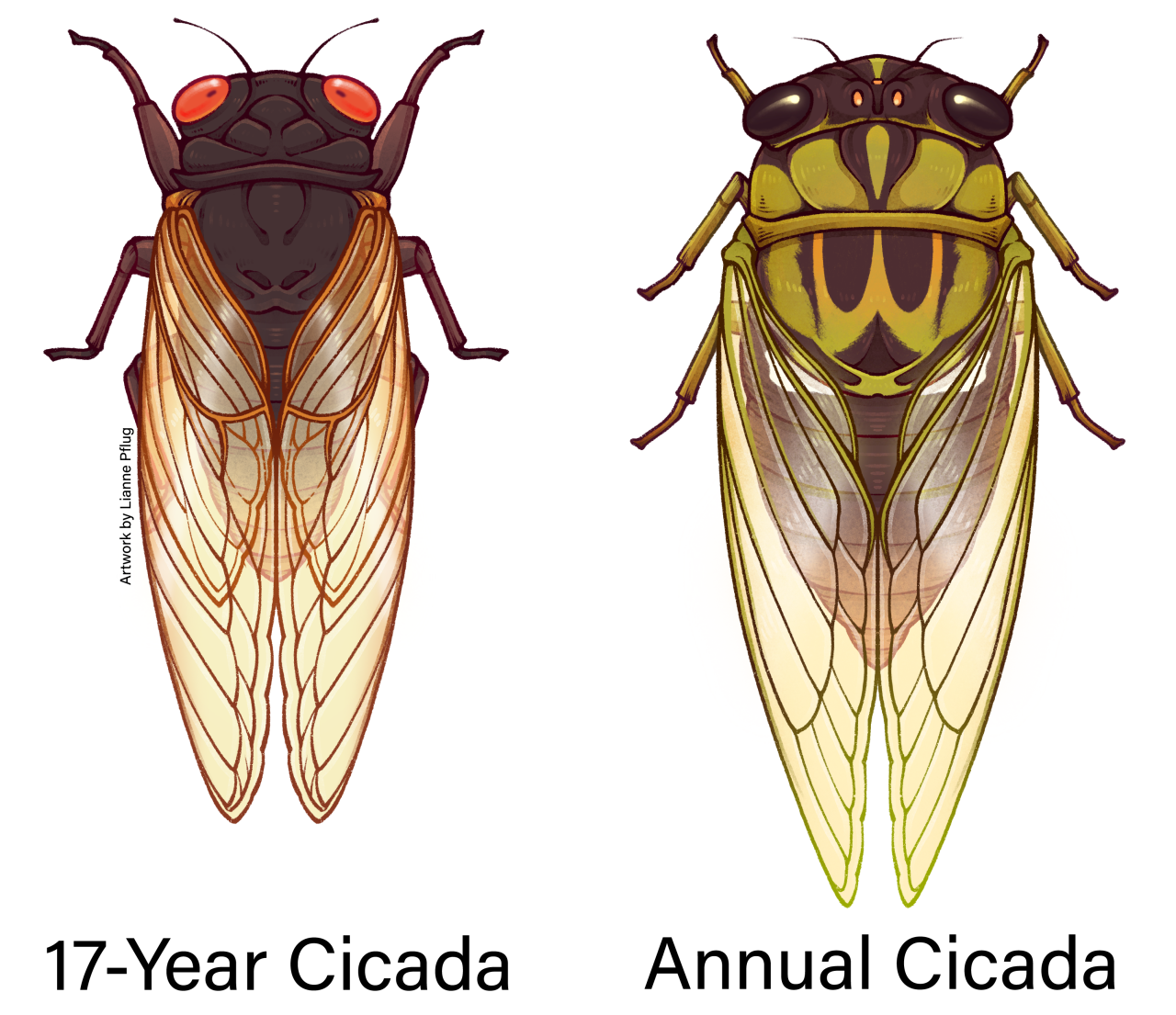INDIANAPOLIS – A rarely seen natural event we haven’t experienced in centuries is set to take place this summer in Indiana.
Two different species of periodical cicadas will emerge within the state: A 17-year cicada brood (Brood XIII aka Brood 13) and a 13-year cicada brood (Brood XIX aka Brood 19). The last time the two broods emerged at the same time in Indiana was in 1803.
These cicadas are different than the annual cicadas you hear buzzing in your trees each summer. Periodical cicadas have a longer life cycles and tend to take on a different look than the summer cicada, with differently-shaped and -colored eyes and bodies.

Many Hoosiers share the collective memory of our most recent cicada brood emerging back in 2021, when so many emerged you could hear the outside din of cicadas buzzing within the walls of your home. Those were Brood X (Ten, but commonly pronounced “X”) cicadas.
All periodical cicada broods make incessant, high-pitched, shrill sounds. But it's actually the males making all the noise: Females have no sound-producing organs.
PREVIOUS | 2021: Brood X cicadas emerge in Indiana to “sing,” mate, die and leave behind eggs
Cicadas usually appear the second half of the month of May and during June.
According to Purdue Extension, Brood X is the largest of the 17-year broods and in 2021 was more widespread in Indiana than the two 2024 broods each are expected to be. Brood X appeared in every single Indiana county. This year’s two broods are expected to appear only in certain parts of Indiana.
And while their areas may not necessarily overlap, they are close: You could travel to see both species in one day quite easily.
Brood XIX (13-year brood) should emerge in 8 western Indiana counties, from Posey and Warrick on the south side, to Newton and Jasper counties to the north.
Meanwhile, Brood XIII (17-year brood) should appear in just a few counties in the northwest: Lake, LaPorte and Porter.
Although the emergence of these two broods at once is marked as historic, it will also come with trouble for their respective areas. Female cicadas cause damage to trees and shrubs when they lay their eggs.

Purdue Extension says it's best to delay planting trees until after the broods disappear below the ground again. And in a 2021 interview, Purdue University entomology educator Elizabeth Barnes said to avoid pesticides: Those can also kill butterflies, ladybugs and a host of other beneficial bugs.
“Cover (small trees) in insect netting and that'll keep the cicadas off,” Barnes said. “It's actually cheaper and more effective than insecticide.”
Many birds and small animals feed on the rich feast of cicadas, so it's not bad for everyone. But emerging in such great numbers means even that decimation won't take out all the insects for the year.
The broods this summer will lay their eggs, which will hatch into nymphs that then burrow down into the dirt again to feed off the roots of trees. They'll emerge in 13 and 17 years again, respectively, to continue the circle of life.






